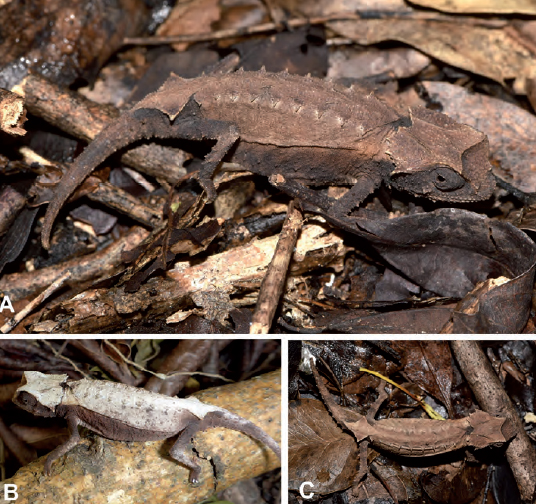The chameleon world still has a lot to offer. Countless species have yet to be described – and sometimes species are hidden in places where none were expected. The increasing possibilities of genetics are providing taxonomists with ever more specialised species terms. And many new species!
Small chameleons can be found scattered all over the east coast of Madagascar, which could be attributed to Calumma radamanus or Calumma nasutum in purely visual terms, but whose populations are locally limited. Many of these populations have not yet been genetically analysed. This means that one or two new chameleon species are certainly still hiding here. On the African mainland, Chamaeleo dilepis could still be hiding some subspecies. It occurs in Tanzania and Rwanda, but also between Angola and Congo and from South Africa to Botswana, Zambia and Namibia. And in Tanzania, six new Rhampholeon species were just described a year and a half ago, which were identified within known species complexes using genetics. These are just three examples of species complexes that still contain hidden chameleon species – many more are still awaiting further research.
#showyourcolours #internationalchameleonday #chameleonday #chameleondayMay9 #agchamaeleons
Picture: Calumma cf. radamanus in Marojejy, north Madagascar, photographed by Alex Laube



